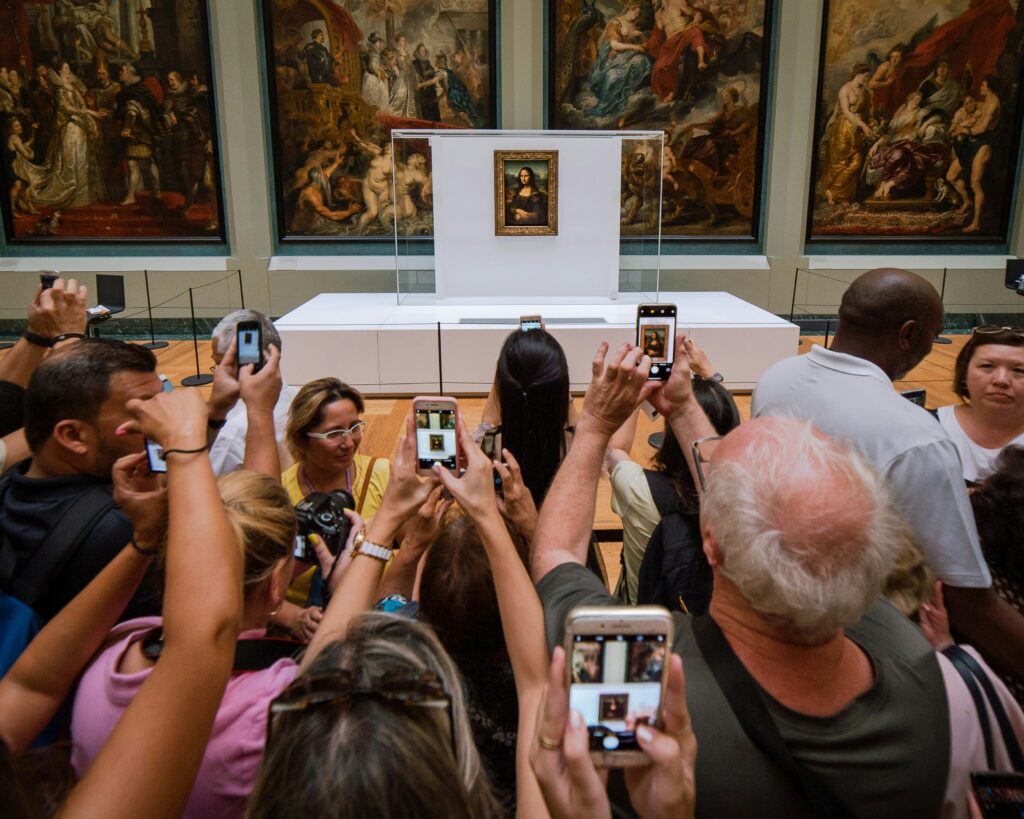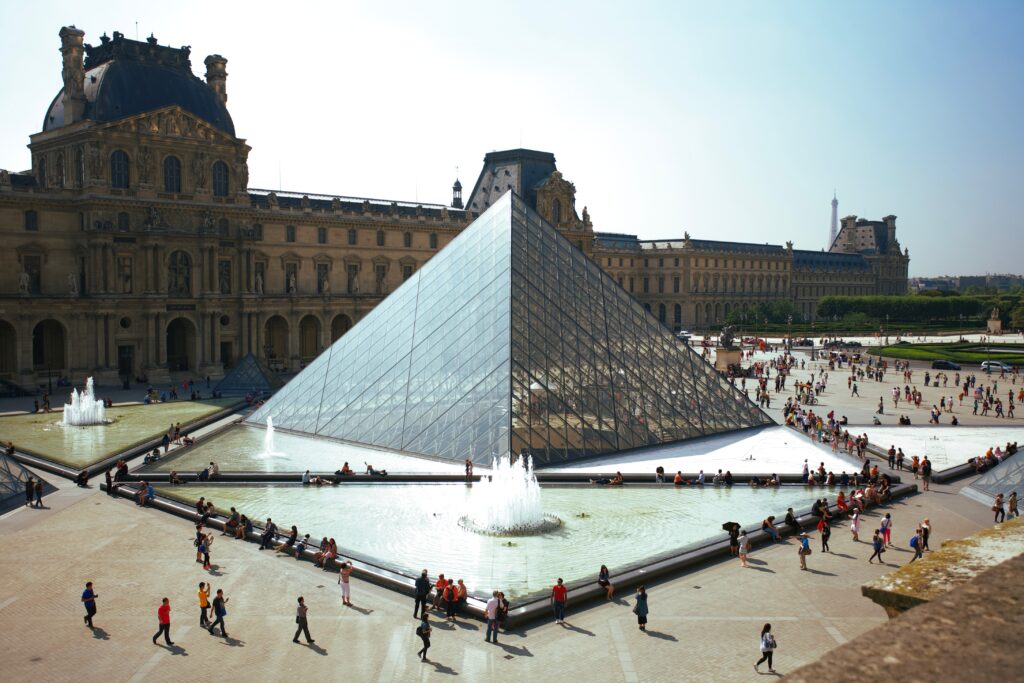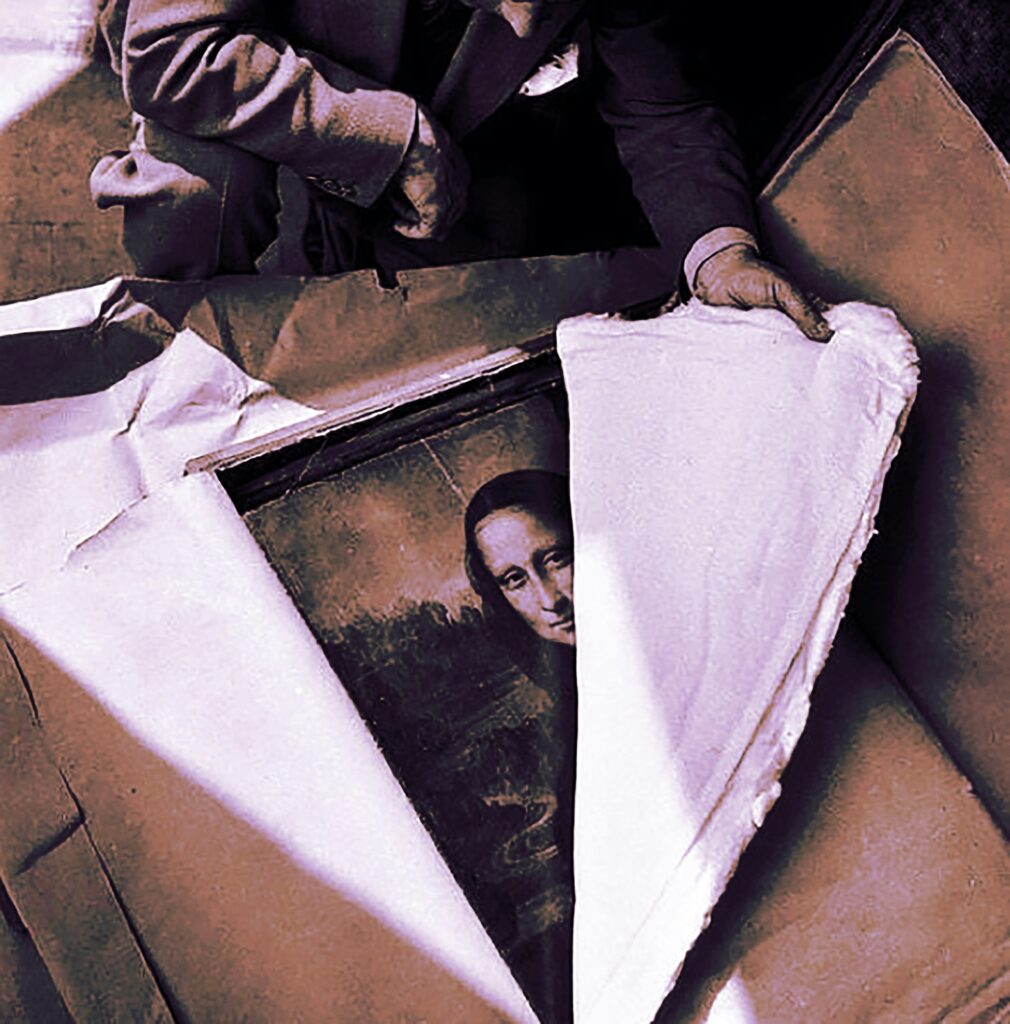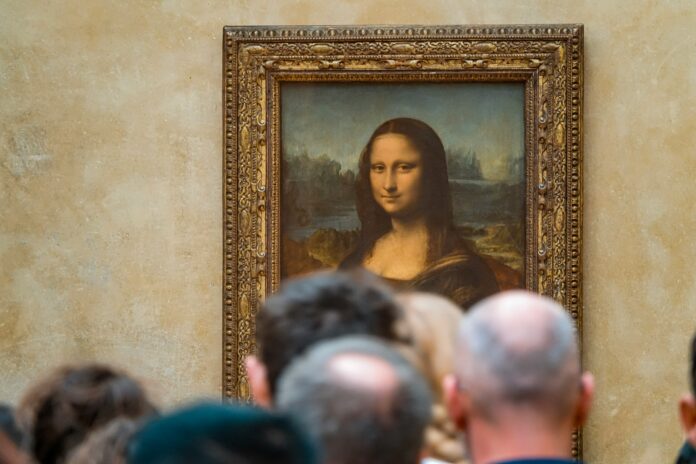The Mona Lisa, a masterpiece by Leonardo da Vinci, has transcended its canvas to become a cultural icon. As dawn kissed Paris on August 21st, 1911, Vincenzo Peruggia orchestrated an audacious heist, propelling the painting into global fame. But what makes the Mona Lisa so famous? Let’s delve into the enigmatic journey of this captivating artwork.
Leonardo’s Brush with Immortality
Leonardo da Vinci embarked on the Mona Lisa in 1503, a portrait commissioned by a Florentine businessman. A testament to Leonardo’s artistic prowess, the painting remained incomplete even at his death a decade later. The Mona Lisa harbors the fruits of Leonardo’s studies on human optics, employing techniques like “atmospheric perspective” and “sfumato.” These innovations created a depth and subtlety that set the painting apart.

Beyond the Canvas: The Dance of Fate and Fame
The Mona Lisa’s ascent to global stardom wasn’t solely due to its artistic brilliance. After King François the First acquired it, Italian scholar Giorgio Vasari’s effusive descriptions in a widely distributed biography elevated its allure. Displayed in Napoleon’s bedroom and later in the Louvre, it attracted visitors eager to glimpse the treasures of fallen aristocracy. European scholars in the 1800s further romanticized the Mona Lisa, emphasizing its mysterious charm.
The Heist that Echoed Through Time
It was Peruggia’s audacious theft in 1911 that thrust the Mona Lisa into international limelight. The thief, contracted for protective cases at the Louvre, exploited his knowledge to steal the painting. The subsequent media frenzy turned the heist into a global spectacle. Peruggia, envisioning himself as an Italian patriot, smuggled the painting to Italy for a misguided hero’s welcome, only to face arrest.

From Heist to Icon: The Mona Lisa’s Ongoing Saga
The resolution of the theft catapulted the Mona Lisa to unparalleled fame. The decades that followed witnessed diverse interactions with this iconic piece. Marcel Duchamp mocked it, Nazi art thieves pursued it, Nat King Cole sang about it, and it endured attacks by vandals armed with stones, paint, acid, and even teacups. Today, protected by a bulletproof, earthquake-safe case, the Mona Lisa stands not just as a Renaissance portrait but as a symbol of how celebrity is crafted and sustained.

An Enduring Enchantment
The Mona Lisa’s journey is a tapestry woven with artistic brilliance, historical intrigue, and audacious heists. It stands as a testament to the enduring power of art to captivate and transcend centuries. The smile that Peruggia sought to return to its homeland now echoes through time, captivating millions and posing the eternal question: What is it about the Mona Lisa that makes it eternally fascinating?
Frequently Asked Questions:
1. Why did Leonardo da Vinci start the Mona Lisa?
Leonardo began the Mona Lisa in 1503 upon a request for a portrait of Lisa Gherardini, a Florentine businessman’s wife.
2. What techniques did Leonardo use in the painting?
Leonardo employed “atmospheric perspective” and “sfumato,” creating depth and subtle color gradations that define the Mona Lisa.
3. How did the Mona Lisa gain international fame?
Giorgio Vasari’s descriptions, coupled with its display in the Louvre and subsequent romanticization by scholars, propelled the Mona Lisa to global fame.
4. What role did the 1911 heist play in its fame?
Vincenzo Peruggia‘s theft created an international sensation, turning the Mona Lisa into a symbol and attracting widespread attention.
5. Was Peruggia celebrated upon returning the painting?
Contrary to his expectations, Peruggia, who considered himself an Italian patriot, was arrested upon attempting to sell the stolen painting.
6. How did the public react to the painting post-theft?
The resolution of the theft led to increased public interest, and the Mona Lisa became a subject of diverse interactions, including attacks by vandals.
7. Why is the Mona Lisa protected by a bulletproof case?
The Mona Lisa, now more than 500 years old, is safeguarded against potential harm with a bulletproof, earthquake-safe case.
8. How did artists and musicians engage with the Mona Lisa?
Marcel Duchamp mocked it, Nazi art thieves pursued it, and Nat King Cole sang about it, showcasing the painting’s influence on various art forms.
9. How has the perception of the Mona Lisa evolved over time?
From being a remarkable Renaissance portrait to a global symbol, the Mona Lisa’s perception has shifted, embodying the complexities of fame and art.
10. Why does the Mona Lisa continue to captivate audiences today?
The Mona Lisa’s enigmatic smile, coupled with its rich history and global fame, continues to captivate audiences, making it an enduring cultural icon.






Mona Lisa is famous for it’s assymetric smile and it depends on the viewer that if she’s smiling or not.
The greatest Art of all timr
I still don’t understand why it is so hyped up 🤷🏻♂️
Can you be more specific about the content of your article? After reading it, I still have some doubts. Hope you can help me.